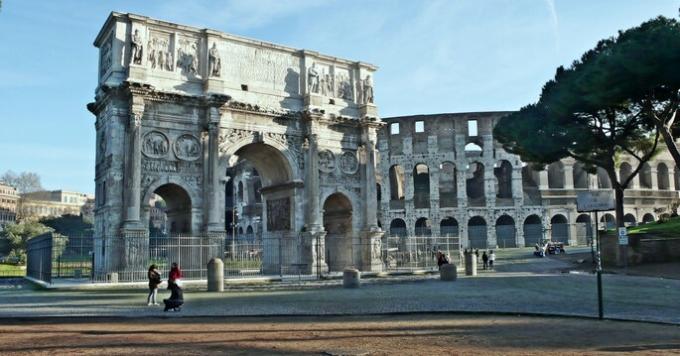Gustav Klimt (1862-1918) was an Austrian Symbolist painter and draughtsman and one of the great names of art nouveau.
He was a forerunner of the modern Viennese movement called the “Vienna Secession Movement”. In it, several artists came together in opposition to classicism and academicism and allied themselves with the Symbolist movement in the arts.
Klimt was an extravagant and singular outstanding artist being his best known work “The kiss” (1908).
Biography

Gustav Klimt was born in the city of Baumgarten, Vienna, on July 14, 1862. Son of the goldsmith Ernest Klimt and the singer Anna Flinster Klimt, he was born into a poor family and since his youth Klimt has been close to the arts.
He was a student at the "Vienna School of Arts and Crafts". This moment marked the beginning of his career as a draftsman, as he began to produce portraits for sale.
In addition, he helped his teacher in the production of murals, and in a short time, he was already receiving job offers. At the age of 18, he and his brother opened a decoration studio, where they received several orders.
His work began to gain notoriety for being different from others at the time.
At this moment, Klimt meets with other artists committed to putting aside the academicism and conservatism of the arts. Thus, in 1890 he was one of the founders of the “Austrian Association of Figurative Artists”.
His peculiar and extremely decorative style was essential for him to receive commissions to carry out his paintings in public buildings such as murals, panels, ceilings, etc.
As an example, we can cite the University of Vienna, the Municipal Theater and the Historical Museum of Art.
In 1900 he received the "Grand Prix at the Paris World's Fair". In 1907 he led the "Vienna Secession Movement", at which time he embraced symbolism with a focus on Art Nouveau.
This group was responsible for editing the newspaper “See Sacrum”, where Klimt presented some of his works as a draftsman and illustrator.
During this period, the artist painted several portraits, mainly of semi-naked women, in obscene and sensual poses. For this reason, he received many criticisms from Viennese society at the time.
He participated in the Vienna Biennale in 1910 and received the prize at the International Exhibition in Rome in 1911. In 1917, Klimt was elected an honorary member of the Vienna Academy of Art.
Death
Gustav Klimt died in Vienna on February 6, 1918, victim of a cerebrovascular accident (CVA). His body was buried in the Hietzing Cemetery (Vienna). Therefore, in 2018 we celebrate the centenary of his death.
Characteristics of the works
Klimt's work is divided into two major phases: the Historic-Realistic Phase and the Golden Phase.
The first, as the name implies, includes works of a more historical character. The second phase brings together works of a more decorative nature, with the production of portraits and the excessive use of the golden color.
In this second moment, which he had greater prominence, his works were full of sensualism and eroticism, where the female figure was the most explored.
For this reason, he was often criticized by the more traditional sectors of society at the time.
With a strong decorative style and use of geometric shapes, he produced portraits of half-naked women and landscapes, replete with details such as flowers and ornaments.
In addition, a striking feature of his works was the use of gold and silver, which approached the byzantine art.
Main Works
Judith I (1902-1907)

The Beethoven Frieze (1902)
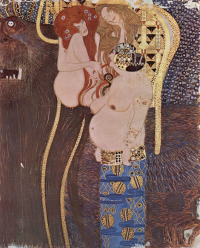
Portrait of Adele Bloch-Bauer (1907)
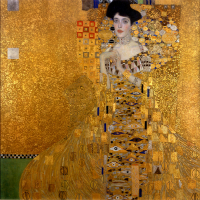
The Kiss (1907-08)

Danaë (1907-08)

Hope II (1907-08)
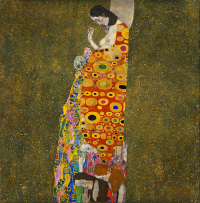
Tree of Life (1909)

The Black Feather Hat (1910)
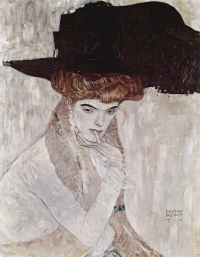
The Virgin (1913)
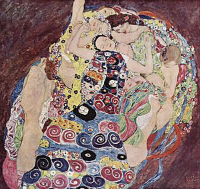
Life and Death (1916)

Curiosities
- Emilie Flöge was his lover for years and was supposed to be the figure portrayed in “The Kiss”.
- Klimt used real gold to produce some works from the golden period.
- Some scholars of the artist claim that Klimt had 14 children.
- Much of his work is gathered in the Belvedere Museum in Vienna, Austria. The site receives around 2,000 visitors a year.
Read more about Modern Art.

